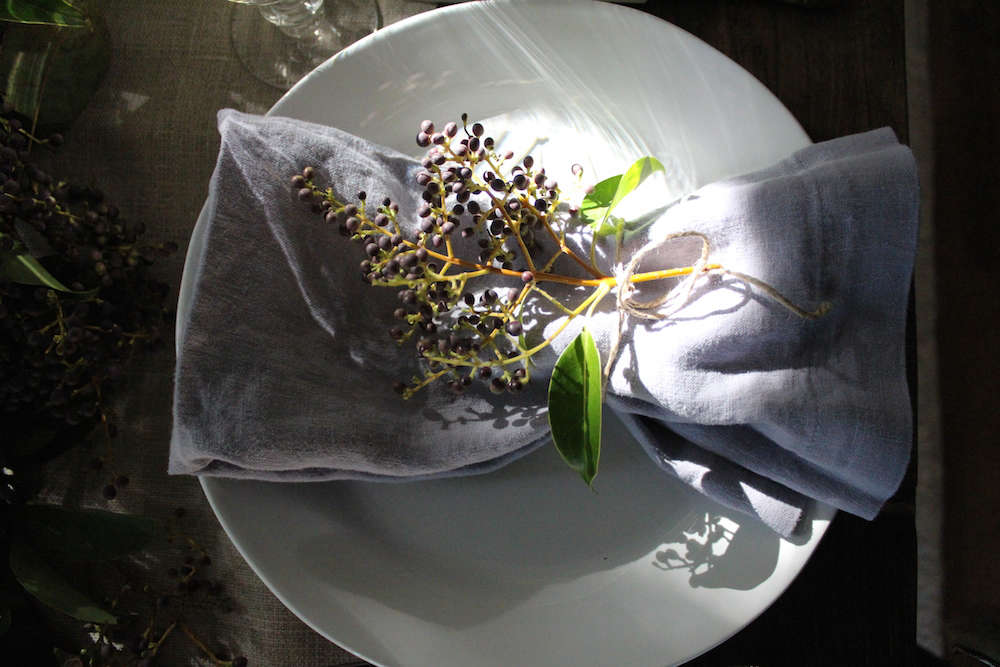Where children and grown-up children are involved, replacing a Christmas tree with a decorated but leafless branch is rarely a crowd-pleaser. And yet the non-traditionalist in you might well be itching to get away from the Victorian template of tree, wreath, and mistletoe—which is why these conifer snowflakes are so brilliant. They take the essence of the season and celebrate evergreens in a way that is at once ancient and modern. The winter solstice, after all, has been honored for millennia by a gathering of greenery—to remind us of life and the slow lengthening of days.
Grown at the conifer forest garden Manabe, on the northern island of Hokkaido, Japan, the wreath-tree hybrids were made by veteran tree man Kentaro Manabe for his friends at Ueno Farm. Just about the only greenery visible above ground at this time of year involves fir, spruce, and pine, in an environment described by Sayuki Ueno as “this freezing land.” Even in summer, winter is not entirely forgotten, with a backdrop of snow-covered mountains that melt only for a couple of months.
Let’s take a closer look at how these simple tree cross-sections are made:
Photography courtesy of Sayuki Ueno and Kentaro Manabe.

Call them what you will, conifer flakes, stars, or snow crystals are embellished here with rose hips, jujube fruit, or pine cones. They can be hung or laid flat as a support for a stout candle.

An elegant and longer-lasting version is made with pine cones; if hung outdoors they will last all winter.

If you have cut your Christmas tree down to size, there may be a useful foot or so left over, for slicing with a saw. Alternatively, for those of us who enjoy pruning trees, any sizeable, discarded branch will do. Drill holes all around the circumference for pushing in conifer fingers, as well as sharpened stalks and pine cones that have had toothpicks inserted. Glue will add support if the holes are not the perfect size.

There are 98 species of conifers grown at the long-established Matanabe Garden. In the West, where trees as well as other plants suffer the vagaries of fashion, spruce, pine, fir, and cedar are enjoying a renaissance with garden designers, who have taken them out of rock gardens and island beds and added them to borders for incomparable texture and shape.
Matanabe Garden and Ueno Farm are part of the Hokkaido Garden Path. The gardens at Ueno Farm were Anglo-inspired, since the region has four seasons, with snow arriving early to protect perennials from the deep frost that follows. However, the summers are short, hot and humid, and garden owner Sayuki Ueno now prefers to use plants that thrive in the conditions. It is a garden that is particular to Hokkaido, which happens to include some familiar cottage-garden plants.
The Hokkaido Garden Path also takes in the Tokachi Millennium Forest, designed by Dan Pearson. For more of the culture and climate on the island of Hokkaido, see Required Reading: Dan Pearson’s ‘Tokachi Millennium Forest’.

Sayuki Ueno is endlessly inventive; she is currently exploring “frozen herbariums” (see Ueno Farm on Instagram). Made with winter cuttings, a bowl of water and sub-zero temperatures, the round ice pendants definitely need to be displayed outdoors.
For more DIY holiday decorations, see:
- DIY: A Minimalist Holiday Garland for Just $10
- DIY Holiday Decor: Foraged Foliage Decorations in Designer Maria le Mesurier’s Home
- DIY: A Dried Fruit Garland for the Holidays












Have a Question or Comment About This Post?
Join the conversation (0)